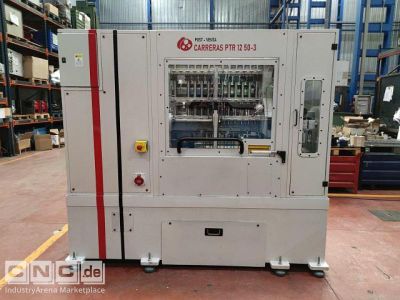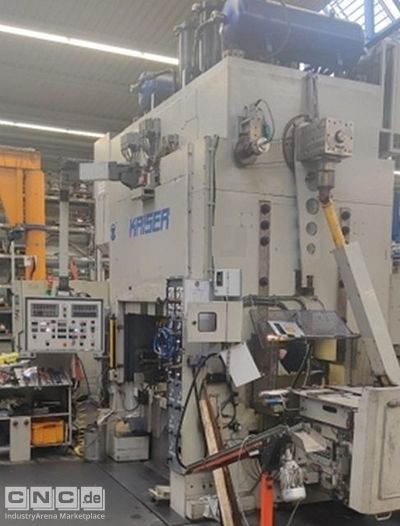Mercado de máquinas e instalaciones usadas
Máquinas usadas H-Frame Multiple-Die Presses
A two-stand progressive press is a type of mechanical press used in metalworking for stamping, bending, deep drawing and other forming processes. The press consists of a frame with two vertical uprights forming the frame. Between the uprights is a flywheel that stores energy for the pressing process. A motor drives the flywheel, which is then connected to the eccentric mechanism via a coupling. The eccentric mechanism is a rotating shaft with an eccentric cam that controls the movement of the press. Unlike eccentric presses, which perform only one forward and one backward motion, a double-column progressive press can perform different stages or working strokes by adjusting the machine in different ways. This is achieved by adjusting the stroke depth and stroke progression on the eccentric cam of the eccentric mechanism. Double-column progressive presses offer high flexibility and can be used to produce a wide variety of parts. They are particularly suitable for the production of parts that require a large number of operations or for which several operations must be performed in a single machine. They are often used in the automotive, aerospace and other industries to produce complex molds and precision components.

|


|


|


|











